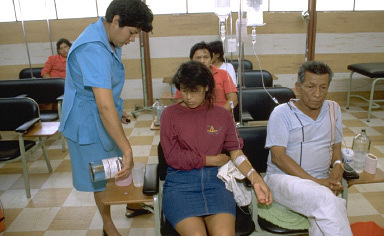Dr. Crystal Johnson is the Principle Investigator (PI) on a grant titled
Collaborative Research: Identifying Environmental
Determinants Favorable for the Presence and Transmission of Pathogenic Vibrios, from the National Science Foundation and
National Institutes of Health (
Ecology of Infectious Diseases program).
There are seven co-PIs on the grant, from four institutions in addition to Louisiana State University: the University of Southern
Mississippi (USM), the U.S. Food and Drug Administration (FDA), the University of Maryland, and the National Oceanic and Atmospheric
Administration (NOAA) Northwest Fisheries Service.
Previous research conducted by Crystal and her colleagues when she was at USM quantified the strong relationship between temperature
and population densities of vibrios in the Mississippi Sound. Their levels are higher in warmer months and lower in cooler months.
However, the relationship is specific to the environmental signature of Mississippi Sound. There are large variations in the density
of vibrios from site to site as well as the percentage of organisms that are pathogenic. Molecular methods being used by Crystal
and colleagues include the polymerase chain reaction and screening for pathogenicity factors such as thermostable direct hemolysin
(
tdh) and tdh-related hemolysin (
trh). It remains unclear what specific combinations of other environmental factors (such as
turbidity, pigment concentrations and salinity) contribute to the observed variations.
Therefore, Crystal and colleagues initiated this project to collect data in four diverse locations, Mississippi Sound, the
Mississippi River Delta, Puget Sound, and Chesapeake Bay. The variety in ecosystem characteristics amongst the grant sites provides
a valuable range of environmental factors. "There's a big group of us and we're all using the same methods to look at populations
and genetic targets for bacteria, allowing us to compare data," says Crystal. "Our strength is that all sites are ecologically
different."
Crystal is also examining the genetic relationships among pathogenic vibrios. The vast majority of the naturally occurring vibrios
are non-pathogenic, but almost all of the vibrios isolated from human illnesses contain some pathogenicity factor. Little is known
about the small subpopulation of environmental vibrios that express these pathogenicity factors.




